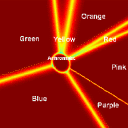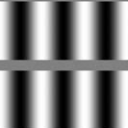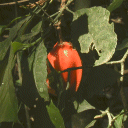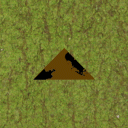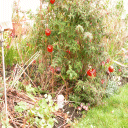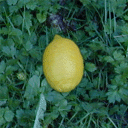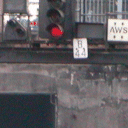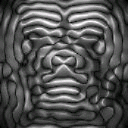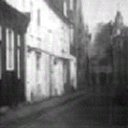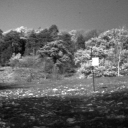|
Colour in Context
Research group Computer Vision Center |
 |
|
 |
The Barcelona Calibrated Images Database, There seems to be a feature of our work as computer vision or visual perception scientists that we sooner or later run into the need of a reliable database of calibrated natural images. Although there are several good ones around (see links on the left), none seems to fit all our particular needs for every given project. This database aims to fill this gap with images defined as standard as possible (in a device-independent colour space) and detailed explanations of the methods (and their limitations) used to produce it. I hope they will be useful to the wider vision community. |
|
|
Colour names (categorisation), It seems very natural for humans to assign names to the colours of objects. However, most observers will agree on the names for certain colours (focal colours, such as red, blue, yellow, etc.) and disagree on the names of others. I am interested in how these categorisation processes work, and particularly on using psychophysical techniques to build probabilistic models of human colour categorization. |
|
|
Brightness induction effects, Two types of brightness induction effects (named contrast and assimilation) have been described depending on the interactions between a test stimulus and its surroundings. Brightness contrast describes a shift of the test stimulus brightness away from its surroundings and brightness assimilation describes the opposite (the brightness of the test stimulus shifts towards that of its surroundings). I am interested in low-level computational models which can predict these effects. |
|
|
Primate vision and Ecology, Spatial and chromatic properties of natural scenes and their relationship to the properties of the primate visual system. I am specially interested in computational models of chromatic and achromatic visual discrimination of reddish fruits and leaves on a background of mature leaves. I am also interested in the ecological basis behind the evolution of trichromacy in primates. These interests have taken me and my colleagues to Kibale Forest, in Uganda, where we conducted research on the visual environment where primate vision is likely to have evolved. Download pdf |
|
|
Avian vision and Ecology, Specifically, the properties of the bird's visual system that allows it to discriminate food, (fruits, camouflaged insects, etc.) from the visual background. This is currently one of my main research interest. I am also interested to see whether primate and avian vision have been shaped by similar ecological constraints such as the need to detect fruit on the tree canopy. Download pdf . |
|
|
The effects of illumination changes on the stability of the red-green and blue-yellow colour opponent information, This reseach explores the relationship between the functional properties of the post-receptoral channels and the spatio-temporal variations in illumination present in nature. Download pdf |
|
|
Modelling of visual discrimination processes on naturalistic stimuli, The starting point of this project is the measurement of psychophysical discrimination thresholds using colour morph sequences which had their spatio-chromatic properties modified to make them more or less similar for images found in nature. These measurements are later used to calibrate an image discrimination model which uses information in both, luminance oust chromatic channels to predict the observer's discrimination thresholds. Download pdf |
|
|
Application of achromatic and chromatic contrast discrimination models to detection of embedded objects in naturalistic scenery, This is a joint project with Human Engineer Ltd and Network Rail to develop a model of conspicuity of railways signals on cluttered visual backgrounds to assist signal engineers and train drivers in identifying potentially less-visible (and therefore dangerous) signals on the British rail network. |
|
|
Modelling of low-level visual processes for image discrimination and detection (in foveal and peripheral vision), Much of the psychophysical results we obtained from human subjects' local contrast discrimination using achromatic images can be modeled by simple multi-resolution computational models. I am interested in models that can predict results from chromatic contrast discrimination. Download pdf |
|
|
Differences between foveal and peripheral vision in relation to the spatial properties of natural scenes, Different ecological constraints have shaped the evolution of peripheral vision and its properties. I am interested in the differences between foveal and peripheral vision in terms of a local contrast discrimination task. I am also interested in the effects of magnification factors applied to peripheral vision to try to compensate for its disadvantages in this specific task. Download pdf |
|
|
The effects of contrast randomisation on the discrimination of Fourier slope changes in natural scenes, This research explores how observers may use spatial image information to perform discrimination tasks using naturalistic images and its implications to what we know about the early stages of visual perception. Download pdf |
|
|
Calibration and use of trichromatic digital cameras, Reasearch on the spatio-chromatic properties of natural scenes is a challenge that often requires modifying or reverse-engineering existing technology to adapt it to our ever-channging needs. I have participated in various projects that required to extract colour measures simultanously from each small part part of the visual scene and to do this my collaborators and I have developed a method of calibrating / characterising commercial digital cameras. Link to McGill image database |
|
|
Spatio-chromatic information content of natural scenes., This research explored the chromatic and achromatic Fourier content of a dataset of natural scenes and tried to establish a relationship between this and chromatic and achromatic spatial filtering properties of the human visual system. Download pdf Download images from hyperspectral database |
